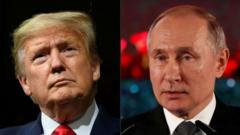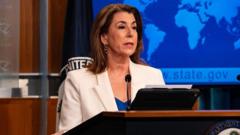With the dollar weakening more than 10% over the past six months, concerns arise regarding U.S. trade relations and economic policy. Global confidence dips as President Trump's tariffs loom, prompting frantic negotiations with international partners.
U.S. Dollar Faces Significant Decline Amid Tariff Concerns

U.S. Dollar Faces Significant Decline Amid Tariff Concerns
President Trump's trade policies and rising inflation have contributed to a staggering drop in the U.S. dollar, marking its worst start to the year since 1973.
The U.S. dollar has experienced a tumultuous six months, declining over 10% against the currencies of key trading partners, marking the worst start to the year since 1973. This decline is attributed to several factors, including President Trump’s aggressive tariff proposals, a more isolationist approach to foreign policy, rising inflation rates, and escalating government debt. Although recent recovery in U.S. stock and bond markets has been noted, the dollar’s descent continues to raise alarm bells.
Economic experts like Steve Englander, global head of G10 foreign exchange research, emphasize that the critical issue is not whether the dollar is weak or strong, but what this trend indicates about global perceptions of U.S. policy.
As President Trump threatens to implement tariffs on July 9, countries scramble to adjust their trade strategies, with Canada initiating the elimination of internal trade barriers. However, economists warn that such measures are insufficient to offset lost U.S. trade, underscoring the urgent need for a comprehensive trade agreement.
In parallel, U.S. and E.U. negotiators are racing against the clock to finalize a trade deal by the impending deadline, though a polished agreement remains uncertain. Meanwhile, the competitive landscape of clean energy reveals that China is rapidly advancing in power generation, even as it remains a significant emitter of pollutants.

















